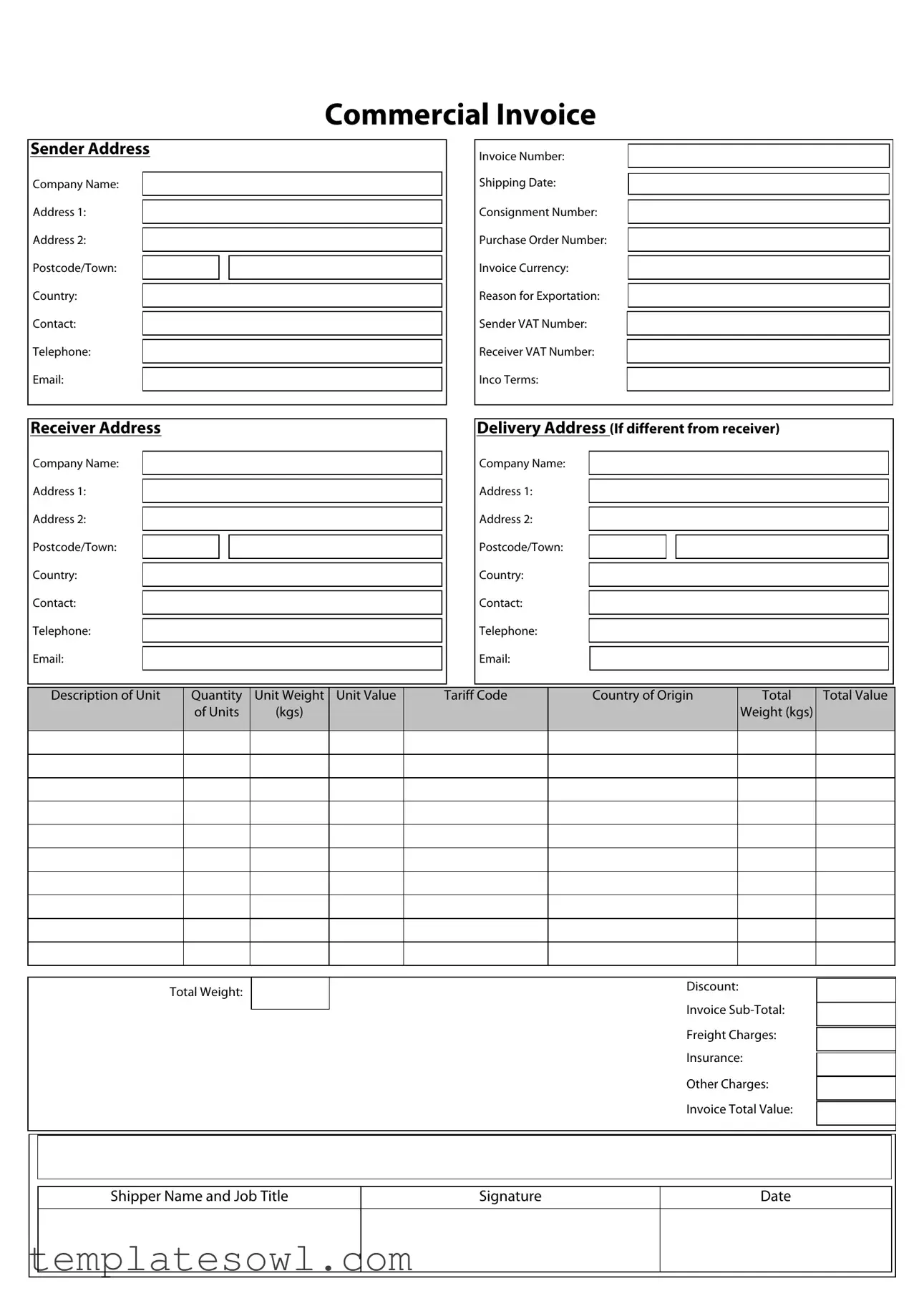What is a Commercial Invoice?
A Commercial Invoice is a document used in international trade. It provides details about the goods being shipped, including the description, quantity, and the value of the products. This document is essential for customs purposes, as it helps authorities to assess duties and taxes on the items being imported or exported.
Who needs a Commercial Invoice?
If you are involved in international shipping, you will likely need a Commercial Invoice. This includes businesses sending products overseas or individuals mailing goods to friends and family abroad. It is required by customs authorities in the destination country to clear your shipment.
What information is included in a Commercial Invoice?
A Commercial Invoice typically includes the following information: the names and addresses of both the seller and the buyer, a detailed description of the goods, their quantities, unit prices, total value, and the terms of sale. Additional details, like shipping method and payment terms, may also be included to facilitate the transaction.
How do I fill out a Commercial Invoice?
To fill out a Commercial Invoice accurately, start with your name and address in the seller section. Next, write the buyer’s name and address. Include a clear description of the items, indicating quantities and values. Lastly, indicate any terms or conditions that apply to the sale. Be sure to double-check all entries before submitting the invoice.
Is a Commercial Invoice the same as a pro forma invoice?
No, a Commercial Invoice is not the same as a pro forma invoice. A Commercial Invoice is a final document required for customs clearance, while a pro forma invoice is a preliminary bill of sale sent to buyers before the actual sale takes place. It outlines the expected costs and details but does not serve as an official invoice.
What happens if I do not include a Commercial Invoice?
If you fail to include a Commercial Invoice with your shipment, it may lead to delays in customs clearance. The package could be held until the necessary documentation is provided. In some cases, your items could be subject to fines or returned to the sender.
Can I modify a Commercial Invoice after it has been issued?
Generally, once a Commercial Invoice is issued, it should not be modified. If you need to change any information, it is best to create a new invoice and reference the original, especially for customs purposes. Clarity and accuracy are essential in ensuring a smooth shipping process.
How can I obtain a Commercial Invoice template?
You can find Commercial Invoice templates online, often available for free. Many shipping companies and trade organizations provide templates that you can customize for your needs. Alternatively, you can create one from scratch by including the required elements as discussed above.
Are there penalties for submitting an incorrect Commercial Invoice?
Yes, submitting an incorrect Commercial Invoice may lead to penalties. Customs authorities may assess fines or other consequences for discrepancies in value or product description. It is important to ensure that all information is accurate to avoid any complications during the shipping process.

